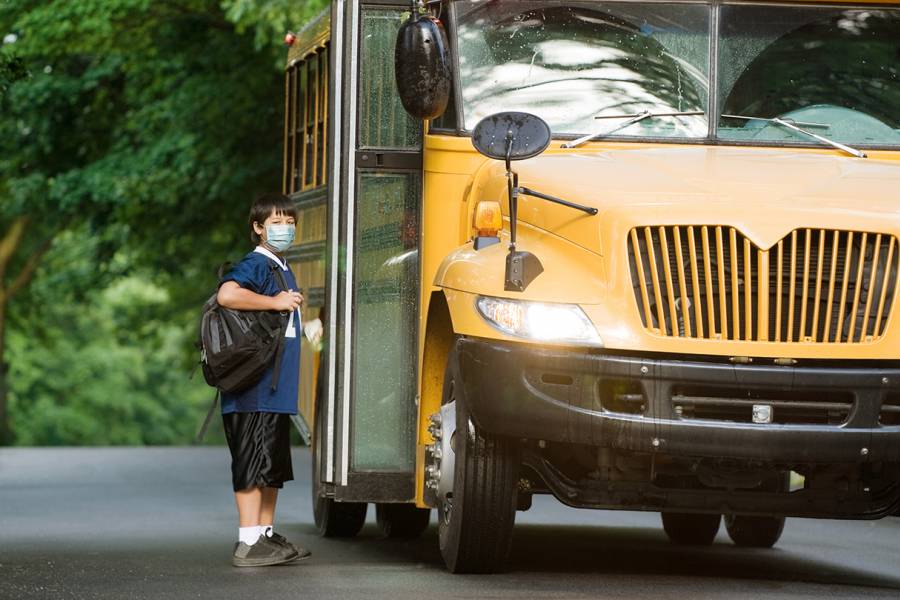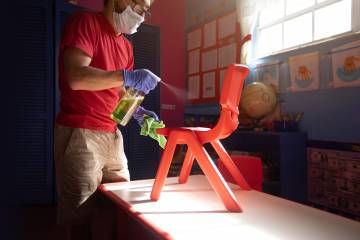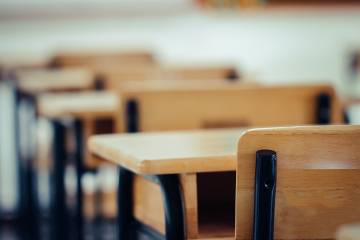By Labor Day, most K-12 students will have been away from their physical classrooms for more than 25 weeks due to COVID-19-related closures, and it's still unknown when schools will reopen their doors. The true extent of the impact this will have on students won't be known for some time, but education experts are warning that school closures will worsen the vast disparities that already exist in most classrooms.
Students could return with knowledge differences of as much as eight grade levels within a single classroom, said Jonathan Plucker, Professor of talent development at the Johns Hopkins Center for Talented Youth and School of Education, and president of the National Association for Gifted Children. Plucker and fellow researchers Karen Rambo-Hernandez at Texas A&M, Scott Peters at Wisconsin-Whitewater, and Matthew Makel at Duke University recently re-examined a sample of fifth-grade students' scores on the MAP Growth test to understand the range of instructional levels present in a classroom at the start of a "typical" school year.
In mathematics, they found that in an average fifth-grade classroom, about 66% of students start the year with skills and content knowledge that are below grade level, while about 24% of students start the year at grade level. About 9% start the year at sixth-, seventh-, or eighth-grade level, while about 2% start at high-school level. In reading, the percent of students starting the year above grade level rises to 15% or more.
Students' academic growth, or the learning loss they encounter during many months away from school, depends on a number of factors, including access to technology, resources, nutrition, and parental and teacher support.
"There is a big spread of student performance in a typical classroom anyway—more than most educators realize—and now we're adding this incredibly stressful, uneven learning experience on top of that," Plucker said. "It's only going to make the situation more complex and lead to a lot of academic diversity that teachers haven't been trained to deal with."
Understanding these disparities is key to addressing them, said Plucker. He recommends standardized testing once students return from virtual learning, so school personnel can understand how students' experiences over the past several months have impacted their learning and make informed decisions about classroom resources, curriculum, and instructional strategies. "Getting data on students as soon as possible is really important," he said.
For the most advanced students, Plucker strongly recommends acceleration—strategies that allow students to move through the curriculum at an advanced pace, such as placing them into a higher-level classroom with older students.
"If a sixth-grader is ready for high school math, find a way to get them into a ninth-grade math class, whether virtually or face-to-face, so they're not just sitting there doodling all day long," he said. "It's usually just for one content area, so they can be with older kids for one subject and then with their friends for the rest of the day. Such strategies make it a little bit easier for the teacher, as they narrow the performance range in their classrooms a bit. We need to keep in mind that the past few months have been very stressful for educators, too."
Parents should be ready to advocate for their child's learning needs next school year and work with school personnel to meet them, he said. "Going in and slamming your fist on the principal's desk saying 'Meet my kids' needs' is never a good approach—especially now," he said. "We have to be sensitive to the fact that being an educator is hard and it's going to get harder. The vast majority of teachers want to help any child; approaching them as partners is key."
Plucker said his research team will continue to review student assessment data throughout the next year to see how much of an impact school closures have had and whether students were able to make up for the lost classroom time.
"Will students be so hungry to learn that they start behind and catch up quickly because they're just so happy to be back? Will they start behind, learn quite a bit, and then end the year still behind where we want them to be? Or has this year been so disruptive that most students have fallen behind and struggle to maintain even a normal pace of learning?" he says. "People are going to pay a lot of attention to what fall [assessment data] looks like; I'm more concerned with what that growth looks like over the next year."
Posted in Politics+Society
Tagged education, education gap, coronavirus












